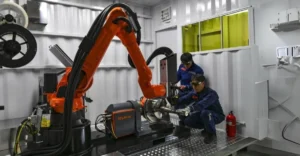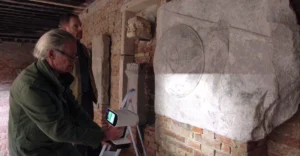Scientists develop holographic soundwave printing to create intricate 3D structures, paving the way for medical and industrial breakthroughs.
In a new publication of Nature Communications, a remarkable new research study has been published regarding a holographic direct sound printing method (HDSP). This 3D printing method differs from other methods as it uses high-frequency sound waves to 3D print intricate and delicate polymer structures with utmost precision. The researchers of Concordia University and California University of Davis have done groundbreaking work which, if developed further, could transform the fields of manufacturing, engineering, and biomedicine. This is possible as it would enable structures which were previously thought impossible using conventional techniques.

How HDSP Transforms 3D Printing
In HDSP, instead of layering as in traditional 3D printing, an entire 2D image is projected and solidified into a 3D object in one step, using an acoustic hologram. Mohsen Habibi from UC Davis, one of the co-authors, explains that the whole process starts with a transducer placed in a chamber full of polymer. The transducer emits focused soundwaves to create high-pressure regions and draws a lot of sculpted forms. Then, a robotic arm moves a printing platform through the zones. High pressure zones are created by sound waves. Material is “fished” from these zones and literally pulled upwards into the shape of a soft sculpture. This new method gets rid of slow, incremental layering, maintaining precision while accelerating the speed of 3D printing.
The technique builds on Habibi’s earlier work with Direct Sound Printing (DSP), which used soundwaves to solidify materials point-by-point. HDSP’s leap forward lies in its ability to project continuous holographic patterns, enabling faster, more efficient fabrication. “When direct sound printing was first introduced, people thought it was science fiction. Now, it’s science moving forward,” said Habibi.
Potential Applications in Medicine and Beyond
So far, the team has successfully printed simple shapes like helices and maple leaves. However, the technology’s ability to craft internal geometries positions it as a promising tool for biomedical applications. Researchers speculate HDSP could one day fabricate artificial bone and cartilage, which require precise yet straightforward structures. While clinical use remains years away, the method marks a critical step toward advanced tissue engineering.

Collaboration Fuels Innovation
The research which Derayatifar and Concordia’s Rama Bhat and Muthukumaran Packirisamy have worked on highlights the value of collaboration between distinct fields. Derayatifar elaborates, “HDSP integrates robotics, acoustics, and materials science. It paves routes towards tackling severe problems that other approaches fail to resolve.”
Broader Advances in Sound-Based Printing
HDSP is yet another addition to the list of sound-assisted technologies that are transforming additive manufacturing. At the University of Melbourne, the Collins BioMicrosystems Lab developed Dynamic Interface Printing (DIP), which employs ultrasound to quickly assemble living cells into tissues. Also, in 2018, researchers at Harvard acoustically sculpted complex fluids for use in optics and electronics, a technique they termed acoustophoretic 3D printing. These advances in bioprinting and industrial design illustrate the need for sound in overcoming the existing barriers of speed and intricacy in the industry.
Read more : Nano Dimension Finalizes $179M Deal to Acquire Desktop Metal
Looking Ahead
While HDSP’s current capabilities are modest, its scalability and efficiency position it as a transformative tool. Future research will focus on refining material compatibility and expanding printable geometries. As Habibi noted, “Every breakthrough begins with simple shapes. What we’ve achieved is the foundation for what comes next.”
For now, HDSP stands as a testament to the power of innovation—and a glimpse into a future where soundwaves shape the physical world.
































